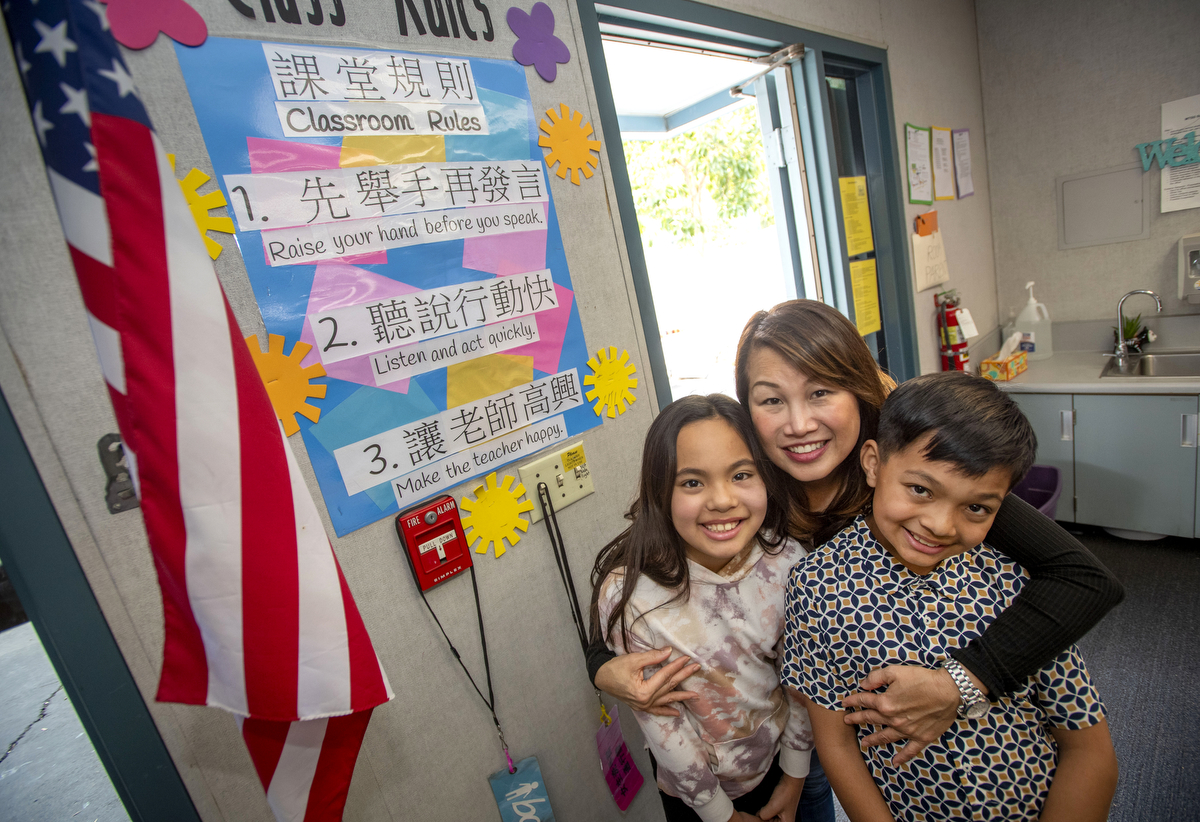By Greg Mellen
“Are we there yet?”
Twins Adam and Alia Hamdy make their displeasure known during their weekday drive to school.
Five days a week the two are ferried by their mom, Jenny Hamdy, from their home in Huntington Beach — going 25 miles in rush-hour each way — to attend fourth grade at Bergeson Elementary in Laguna Niguel.
The three have made the commute for the past two-plus years so the children can take classes in the school’s noted Mandarin Immersion Program. The location is not as convenient as their former school, which was a three-minute bike ride away. But it is worth it – at least, to their mom.
“They complain about the drive every day,” says Hamdy, who enrolled the kids in the school via an interdistrict transfer.
“It’s far and we have to eat in the car,” Adam said.

Photo by Michael Goulding/for CUSD Insider
Normally, children begin the immersion program at Bergeson Elementary in kindergarten, but the Hamdy twins were able to test into the class in the second grade.
Hamdy, who is from Singapore and learned Chinese as a second language in her home country, said her kids had been taking Mandarin after school and on weekends prior to entering Begeson, but she wanted them to do better. Prior to transferring, Hamdy said the twins were taking Chinese lessons via Zoom.
“I’d come home and they were both asleep in front of their computers,” Hamdy said.
“It was too long,” Alia said.
Hamdy said she did her research and decided Bergeson was the best fit for her kids. The two children, whose father, Ahmed, is Egyptian, also attend a weekend class in Fountain Valley where they are learning Arabic. Hamdy said the language helps the kids when the family takes its annual summer trips to Egypt to visit her husband’s family.
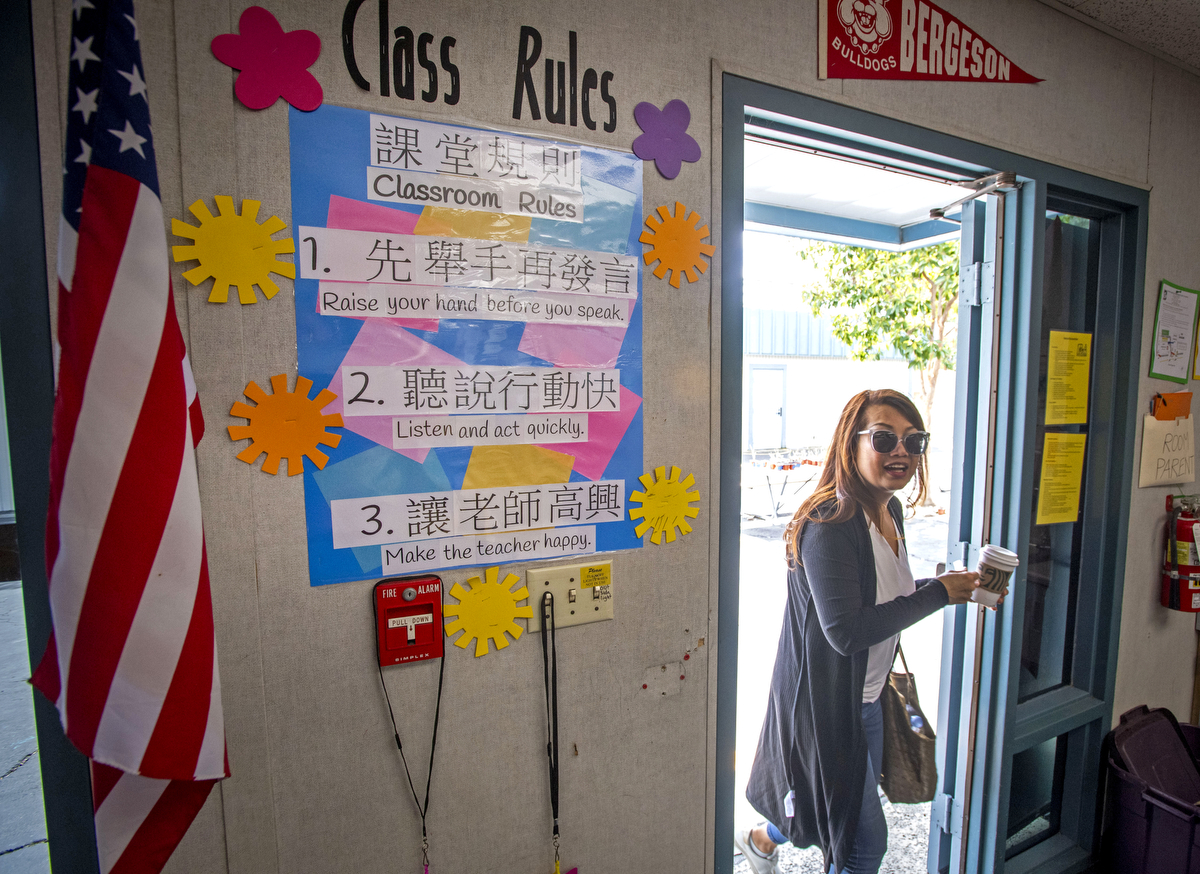
Photo by Michael Goulding/for CUSD Insider
Hamdy grew up learning English and Mandarin in school and her husband is bilingual as well in Arabic and English. Hamdy said she believes multilingualism is an invaluable addition to education, and CUSD is very strong.
“I think it’s a great program that allows them to continue,” she said, referring to CUSD providing ongoing classes in both middle and high schools, which families commit to before enrolling.
The transition took a little getting used to.
“I just felt shy. I missed my old school and my friends,” Adam said.
However, the children are settling in well and enjoying the class. Alia described a play she and the class are writing in Mandarin in which she plays the Grandpa and her brother plays Peppa Pig.

Photo by Michael Goulding/for CUSD Insider
The Mandarin Immersion Program is split into two sections for fourth grade. For half of the day students are taught in Mandarin and the other half of the day they are taught in English. Melody Lu teaches the Mandarin portion and Greg Suits the English.
In first grade, students are taught completely in Mandarin for about 80 percent of the day, eventually leveling out to 50-50 by the end of elementary school. Students also learn to read and write in Mandarin.
Suits, who is not bilingual, is in his first year teaching immersion students and sees a difference.
“They’re a little more driven, a little more motivated,” he said. “People come here for a reason.”
Lu said the goal is to reach Mandarin fluency and that already her kids are testing at a middle school level.
“I’m a lot more confident now,” Adam says of his Mandarin.
The kids also mention a side benefit of learning the language.
“We can talk and Dad doesn’t understand,” Alia says. “It’s like our secret language.”
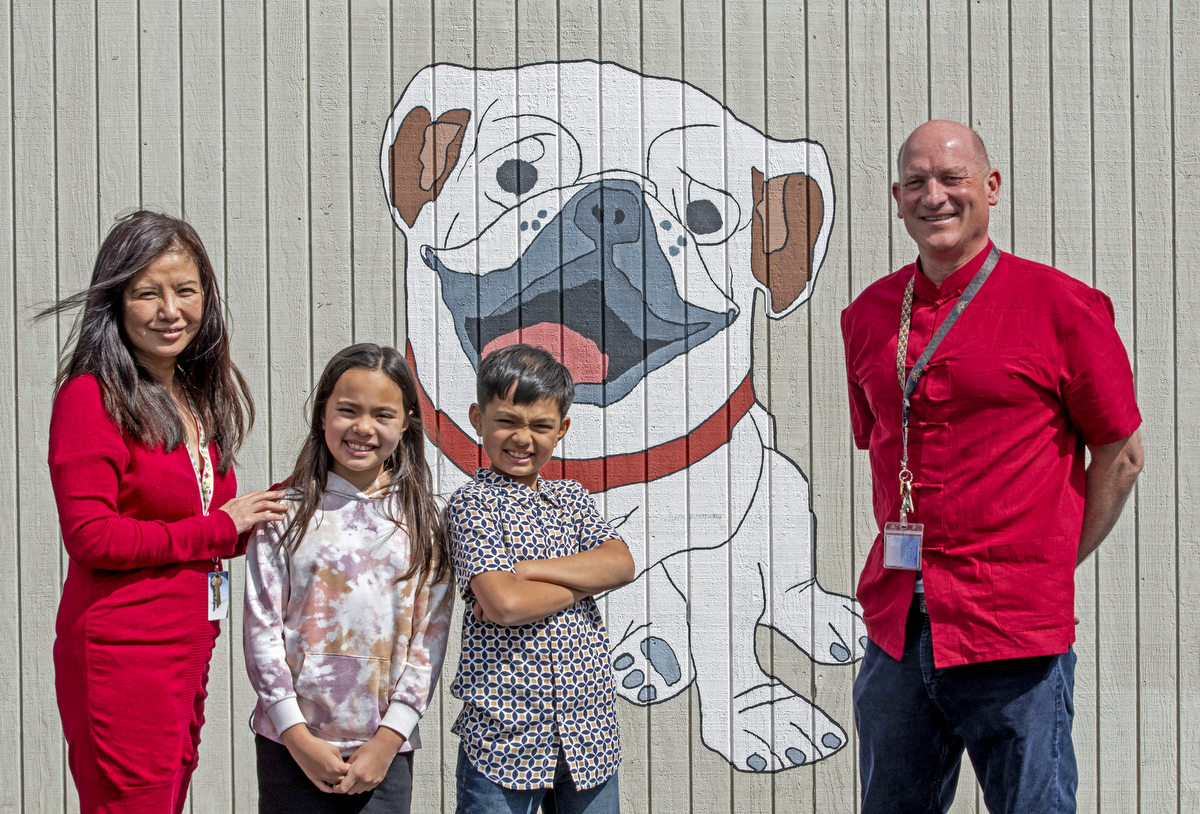
An immersive experience
In the Capistrano Unified School District, language immersion programs have been a staple since 1992 when Spanish was first offered.
Twelve years ago, a group of forward-looking parents successfully lobbied to have a Mandarin option added at Bergeson, making it the first public school with the program in Orange County. This year, students from the inaugural class are graduating from Capistrano Valley High.
Since the launch, several families have moved into the Capistrano district solely to take advantage of the program, while others, like the Hamdys, endure commutes from outside the district to attend.

Photo by Michael Goulding/for CUSD Insider
According to research, multilingual learning has numerous benefits, such as stronger reasoning skills which support the problem-solving necessary for academic success. Multilingual learning also positions students for future careers utilizing or requiring multilingual skills. Students with Mandarin Chinese proficiency interested in international relations, diplomacy, or business have a huge advantage, particularly as Chinese influence grows across the globe.
Proponents of dual-language courses say they build communication skills overall and appreciation of cultural awareness. At Bergeson, for example, students learn about Chinese traditions such as the Lunar New Year and the Moon Festival. Alia said she knows a lot more about Lunar New Year and the Chinese zodiac since taking the class.
At Newhart, a course in social studies in Mandarin is offered. Capistrano Valley High offers Advanced Placement and International Baccalaureate Chinese as well as world history taught in Mandarin.
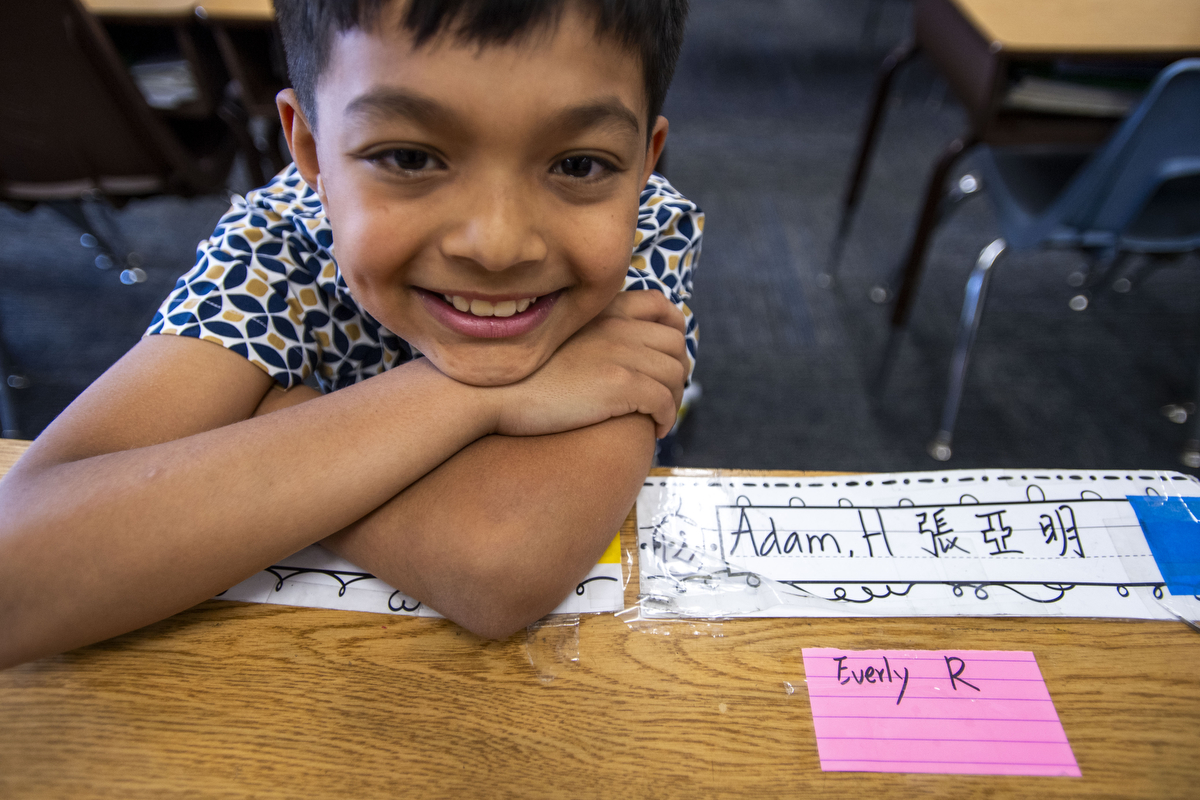
Photo by Michael Goulding/for CUSD Insider
Although some of the students in the immersion program are from Chinese households, at Bergeson Lu estimated only about 20 percent speak Chinese at home. Despite the concentration in Chinese, the students are able to pick up English and, according to officials, outperform the district average.
Mandarin, spoken by more than 1 billion people worldwide, has risen in prominence to challenge English as the universal language of international trade and diplomacy.
As the school day draws to a close at Bergeson, it’s back to the minivan to drive to Adam’s soccer practice.
Hamdy’s children have a busy after-school schedule as well. Adam is big into soccer and Alia enjoys horse riding, particularly dressage. The kids also have piano lessons and taekwondo.
“I usually bolt right after class,” Hamdy says.
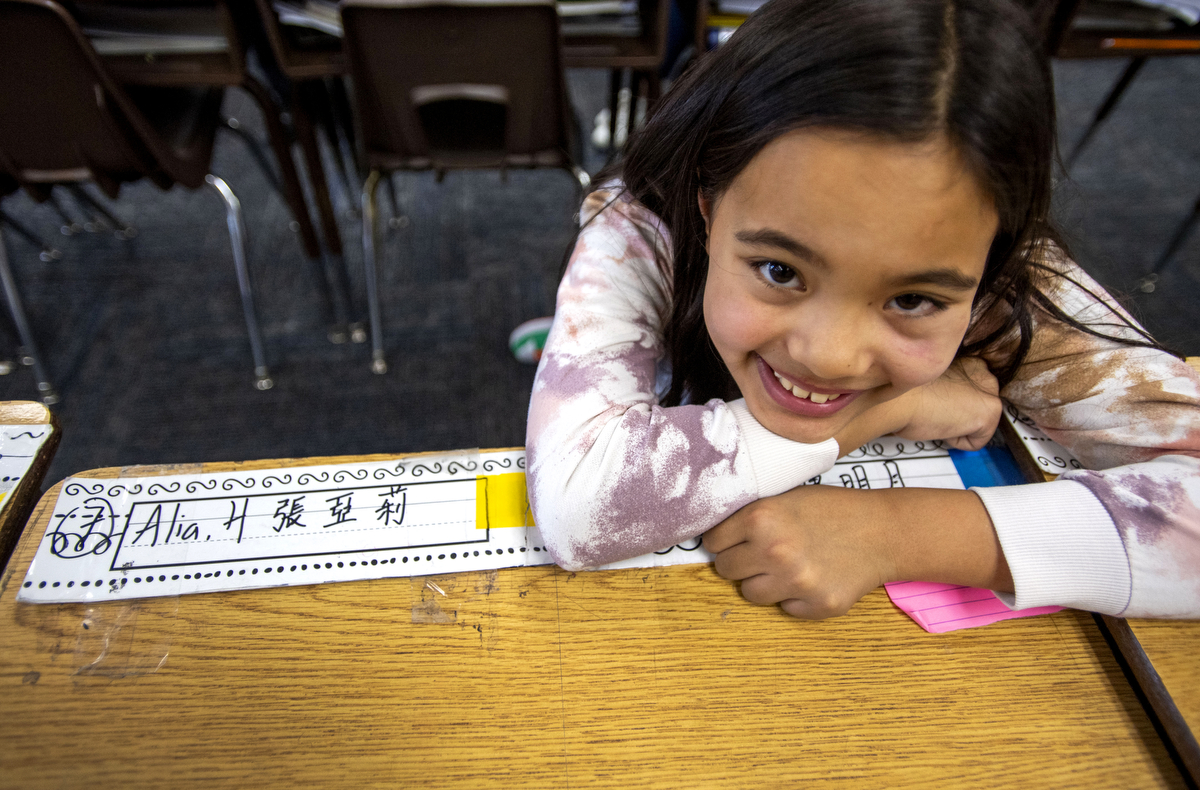
Photo by Michael Goulding/for CUSD Insider

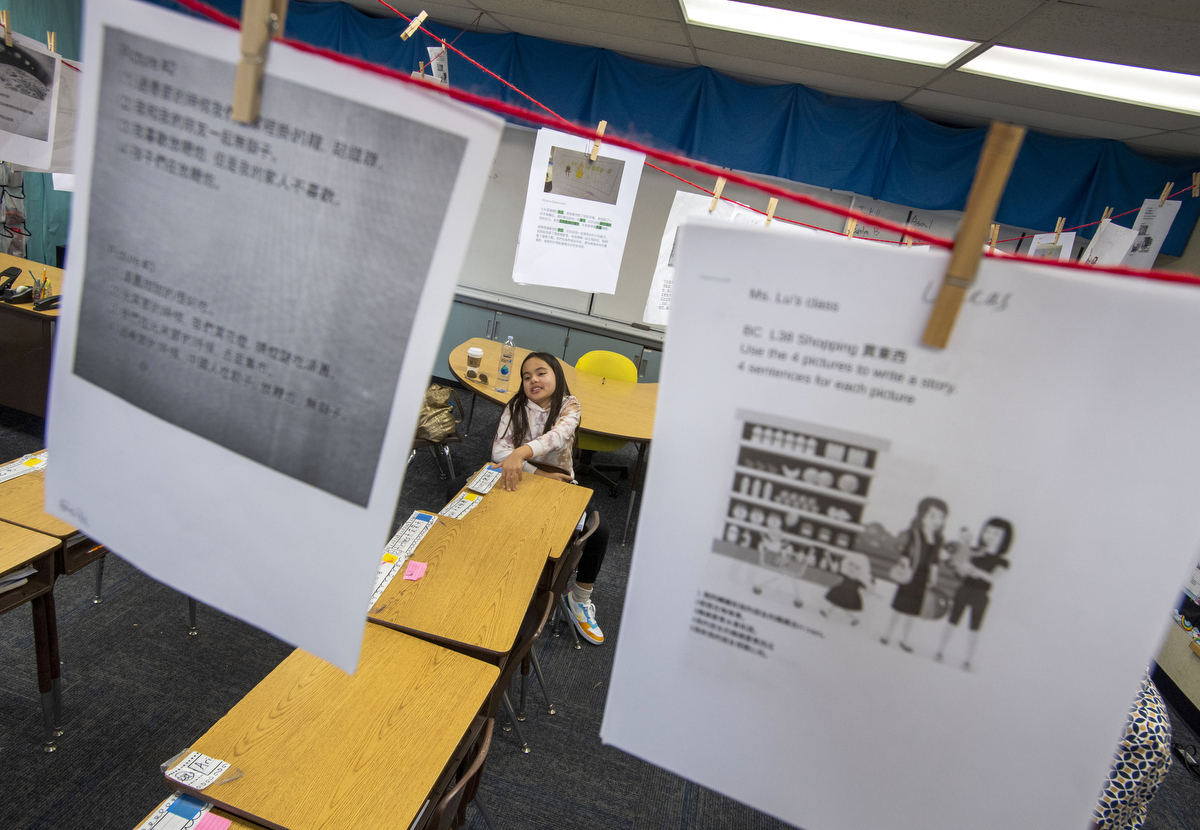
Photo by Michael Goulding/for CUSD Insider

Photo by Michael Goulding/for CUSD Insider

Photo by Michael Goulding/for CUSD Insider

Photo by Michael Goulding/for CUSD Insider

